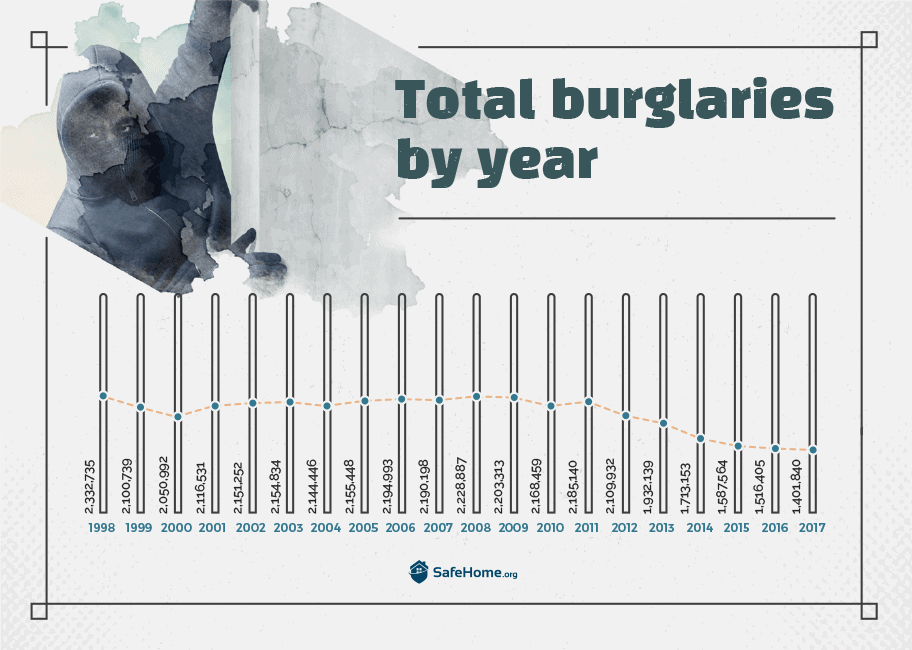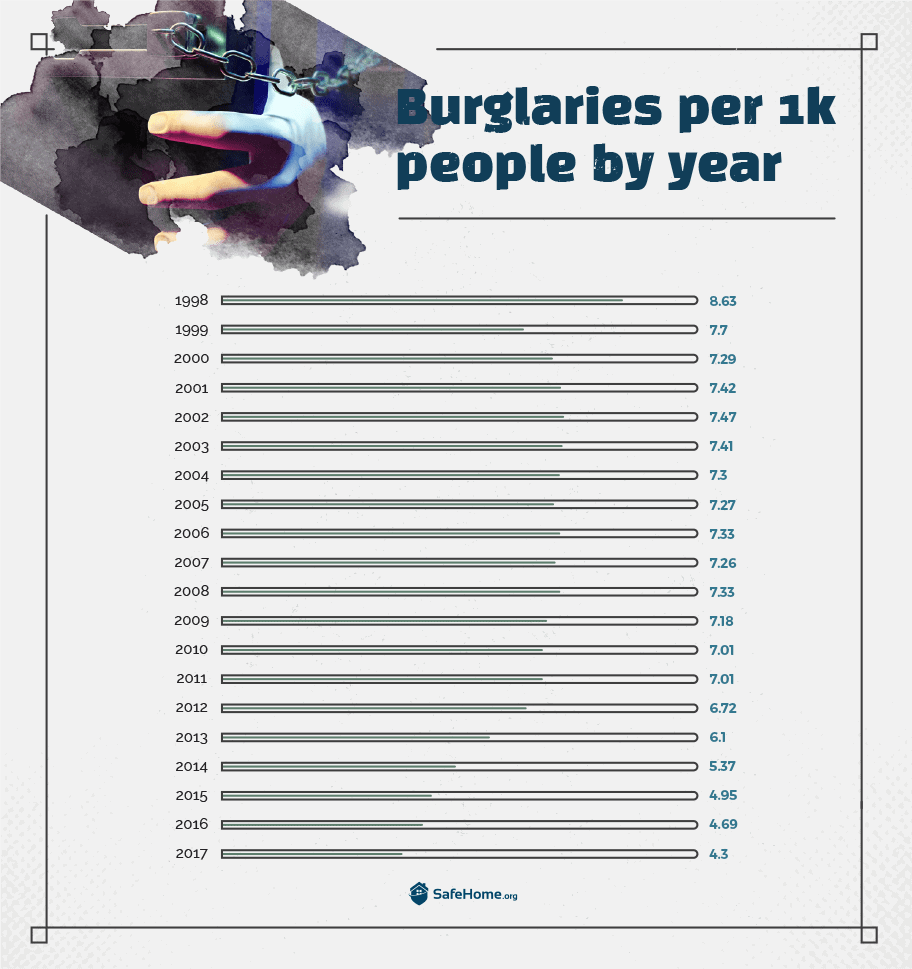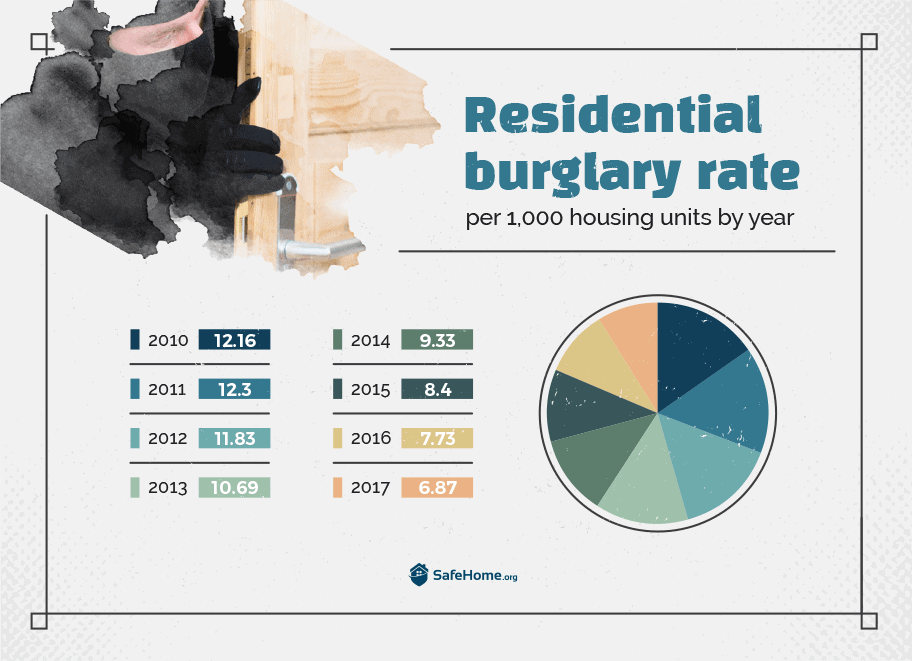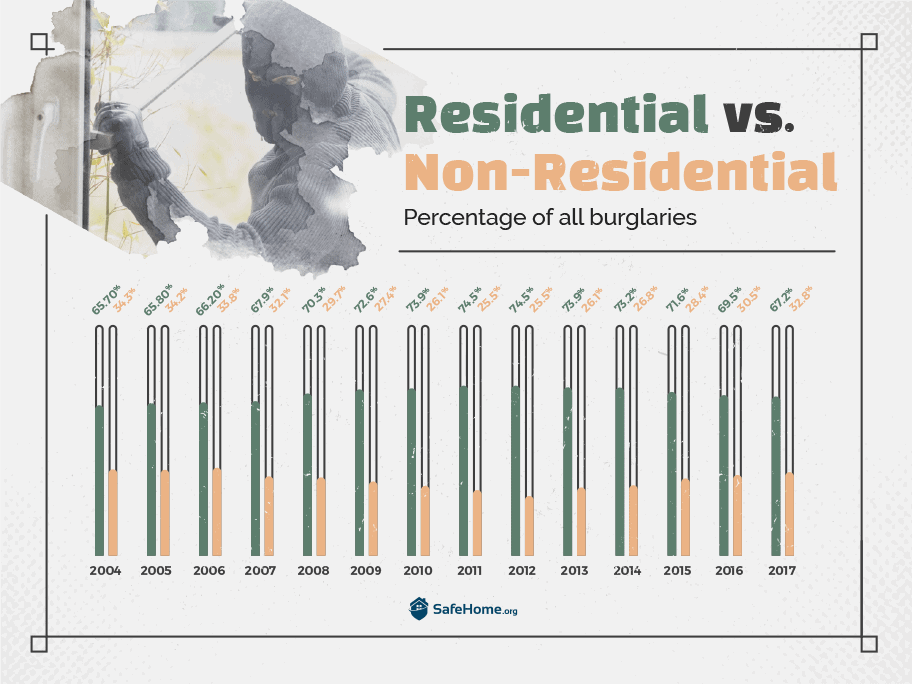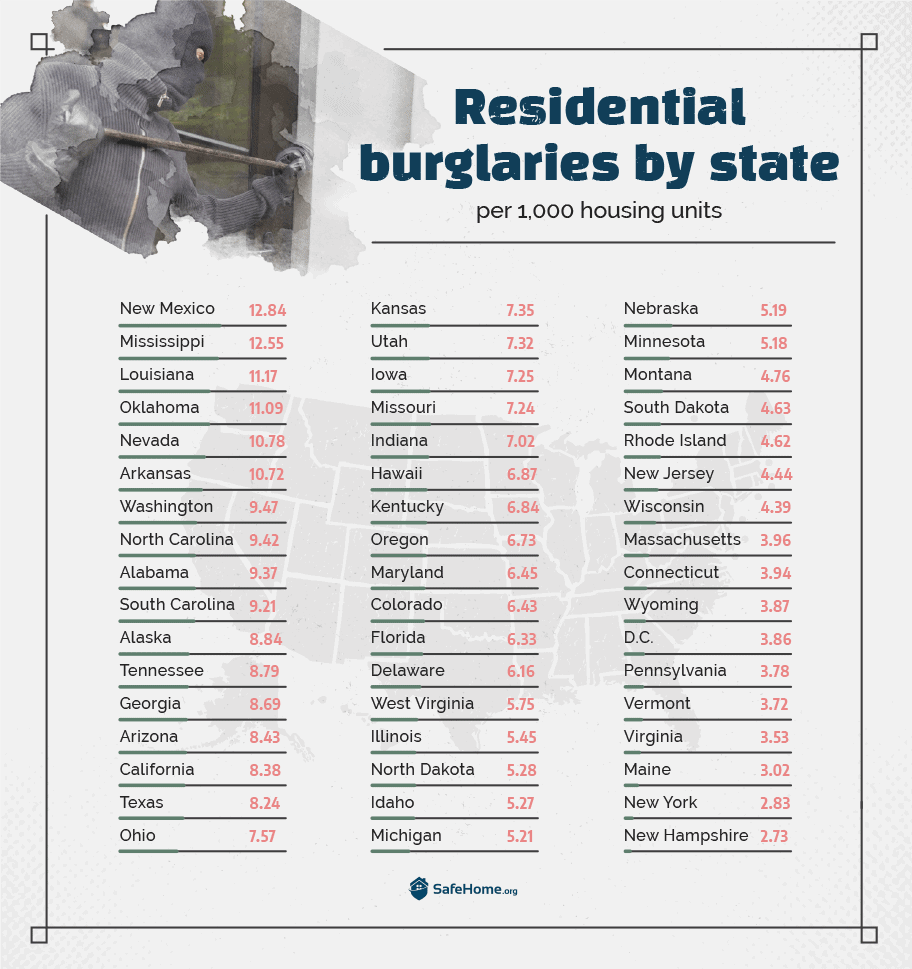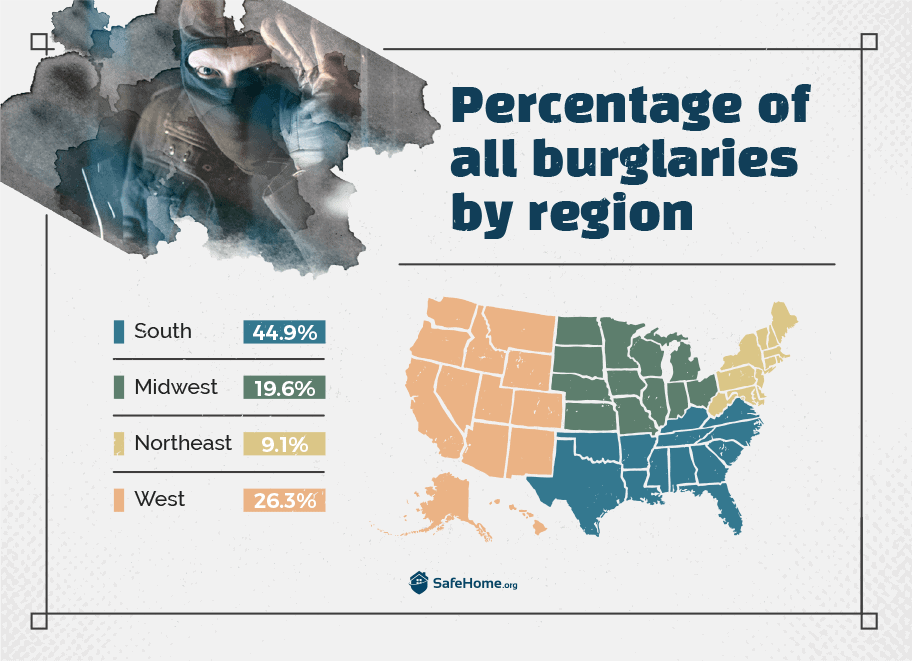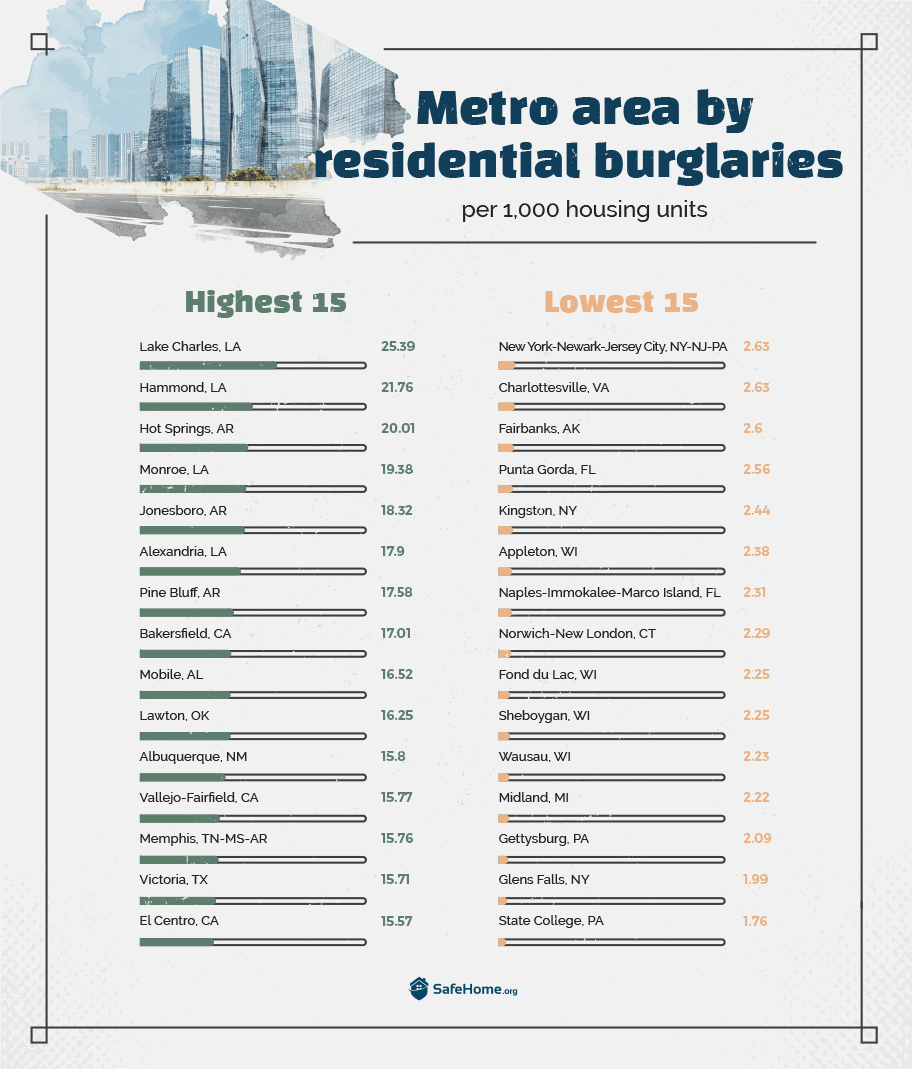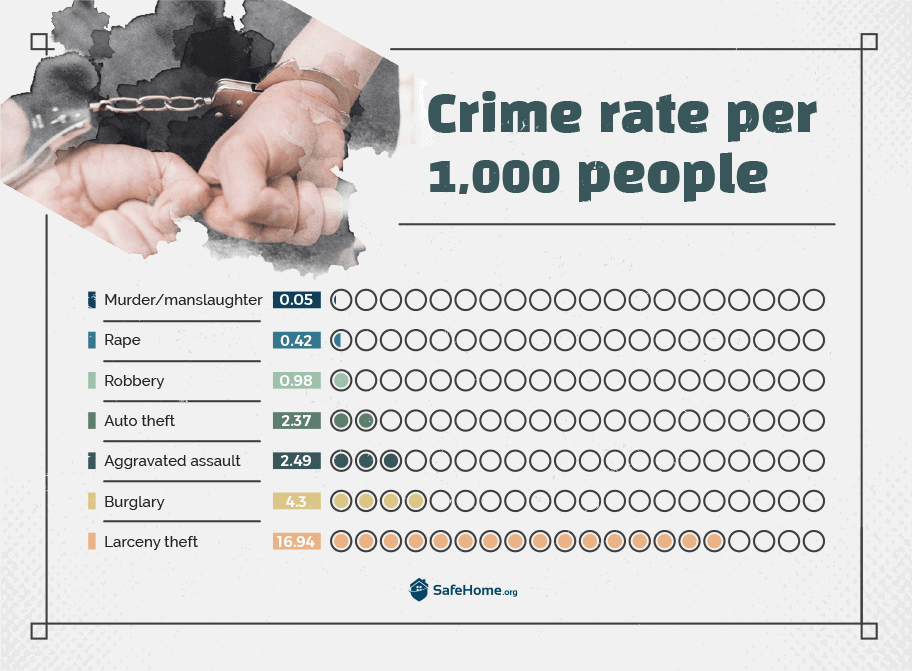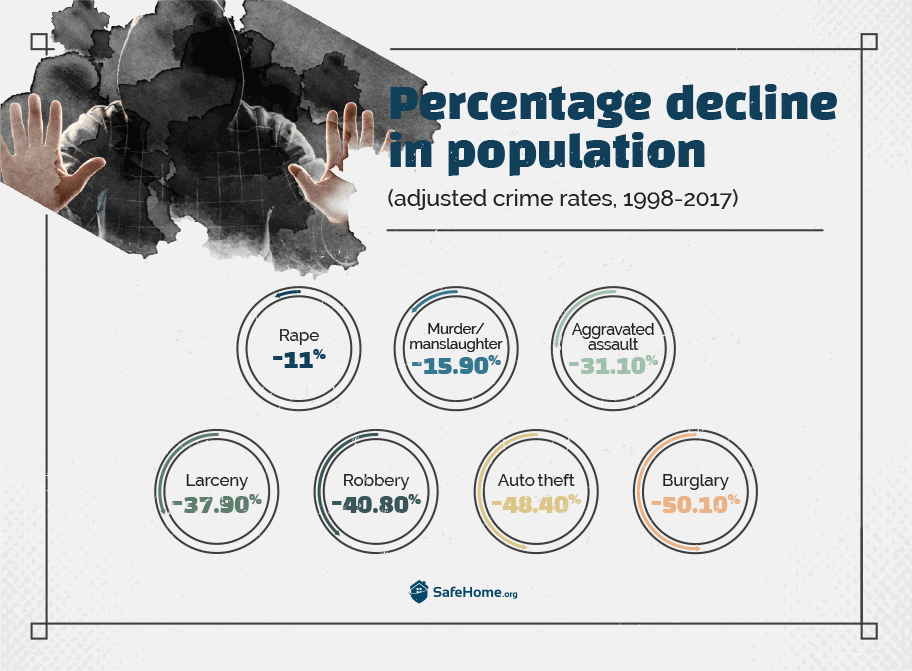Burglary, like most crimes, is becoming less common in the United States, according to figures released by the Federal Bureau of Investigation. In fact, the total number of burglaries dropped by nearly 40% between 1998 and 2017, and continues to drop year-after-year.
The number of burglaries may be falling, but in 2017 alone the total value of what was stolen topped $3 billion — and that doesn’t include other types of theft. What should every American know about how common burglary is, which states and cities are most prone to such incidents and how to keep themselves from becoming victims?
Current Burglary
Statistics & Trends
Burglary accounts for just under 20% of all property crimes, but the prevalence of burglary has been falling consistently over the past several years. That is due in part to the increasing popularity of home security systems.
Today’s rates & recent trends
Just over 1.4 million burglaries occurred in the United States in 2017, according to the FBI. That’s the lowest total number of burglaries reported by the FBI in the past 20 years.
The rate of burglaries relative to the overall population has dropped as well, falling by more than 50% since 1998.
Residential vs. non-residential burglaries
Burglary affects more than just one person, and some burglaries affect businesses, schools, even churches. So let’s look only at residential burglaries and try to draw out some nuance in these figures.
Residences accounted for 2 in 3 burglaries, with stores, offices, churches, schools and other buildings making up the other third. So how common is home burglary when taking into account how many residences exist in the U.S.? According to the data, burglary impacts nearly 7 in every 1,000 housing units.
But even when calculating the numbers based on households, residential burglary has quite plainly become less common. In fact, the rate has fallen by about half since 2010.
Over the past several years, the mix of burglaries impacting nonresidences vs. residences has shifted. Since reaching a higher near 75%, the percentage of residential burglaries has fallen since 2012.

Type of entry
A majority of burglaries involved forcible entry, though about one-third occur as a result of what the FBI terms unlawful entry, which includes entering through an open door or window. But 57% of burglaries involve forcible entry, and another 6% involve attempted forcible entry.

Time of day
Among home burglaries where the time of day when the incident occurred was known, more than 6 in 10 occurred during the day. Even when expanding the scope to include all burglaries, regardless of the setting or time of day, daytime home burglaries are the most common, accounting for 34% of all burglaries. This mix has remained roughly the same over the past decade-and-a-half.

Value of items stolen
The average burglary involved stolen cash and other items of $2,416 in value, but nonresidential burglaries tended to have higher value, while residential burglaries at night were of the least average value, $1,995 per burglary.

Recovery of stolen items
About 29% of the value of all items stolen in all types of theft, including burglaries, robberies and car thefts, was recovered. Cash was the least likely item to be recovered, with just 2% of the value of currency stolen being recovered; motor vehicles were the most likely to be recovered, with nearly 60% of the value of all stolen vehicles being returned.

Arrests
Arrest rates for property crimes are much lower than for violent crimes, and burglaries tend to draw the lowest arrest rates among all property crimes. About 13.5% of burglaries involved a person being arrested, behind auto theft (13.7%) and larceny (19.2%) and well behind violent crimes like murder (62%) or aggravated assault (53.3%).
States & Cities With
Highest Burglary Rates
Where in the United States are burglary rates the highest? On the state level, nearly half of all residential burglaries occurred in Southern states, though rates are also high in the West.
Weather seems to play a role in how common burglary is in each state. Among the states with the highest residential burglary rates, their median annual temperature averages out to about 59 degrees, while the lowest 10 states’ median annual temperatures average out to just 48 degrees.
Several metro areas across the country have residential burglary rates that exceed the overall rates for the U.S. The average rate for the 300+ largest U.S. cities is 7.59 per 1,000 households, barely above the overall U.S. rate.
Burglary Vs. Other Crime
Among all crimes, burglary is one of the most common. In fact, burglary accounted for about 15% of all crimes, including violent and non-violent crimes.
All major crime categories tracked by the FBI have seen their total numbers and rates decline since 1998, but the burglary rate has fallen the most.
Conclusion
While burglary, along with every other major crime, has become less common, according to FBI statistics, theft or attempted theft from homes, businesses, churches, schools and other buildings remains one of the most common crimes committed in the U.S. today.
Did You Know? It is proven that security cameras and security systems can deter burglars? We've tested all of these devices and ranked them based on their performance. See our best home security cameras and best home security systems pages for all of the stats from our analysis.
About This Story
All of our data on crimes — total crimes, rates and trends — came from the FBI’s annual Crime in the United States reports. These resources include dozens of different data tables, going back some 20-plus years. To help illuminate the scale of residential burglaries in the states and across metro areas, which is not data the FBI splits out in its annual reports, we calculated the number of residential burglaries in each area by using the overall percentage of all burglaries that strike residences.
Information on weather and average annual temperatures was taken from this resource, which did not include the District of Columbia, so D.C.’s average temperature was calculated using the data here.
We consulted multiple datasets published by the U.S. Census Bureau on the total number of housing units in the U.S., each state and the 300-plus metro areas we examined. Those tables can be accessed through the Census Bureau’s American Fact Finder interactive tool.
Fair Use Statement
The information and images on this page are free to share for noncommercial purposes. If you want to use or share the information, please simply provide a link back to the URL of this page so that proper credit can be given.

